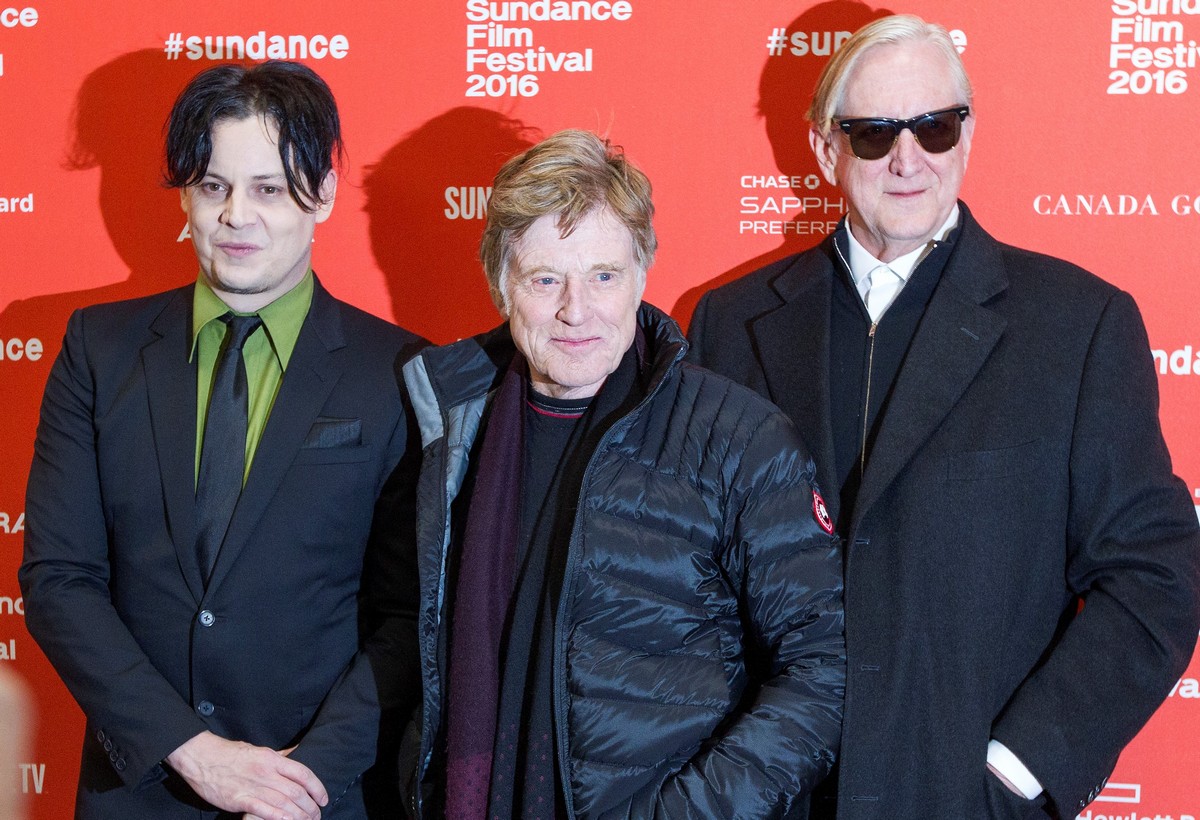Musical events are a tradition at the Sundance Film Festival and Thursday night’s special event at the Eccles Center was one not to miss.
Appearances by Robert Redford and filmmaker Bernard MacMahon, a partial screening of “American Epic,” the upcoming four-part six-hour television mini-series about the evolution of American music, an extended onstage conversation between Sundance Institute Film Music Program director Peter Golub, T Bone Burnett, Jack White, Taj Mahal and MacMahon, and live mini-sets from Taj Mahal and the Avett Brothers, were highlights.
Setting the stage for the film, Redford spoke about how music became a major force in shaping his life and how it continues to influence his journey to this day. MacMahon then talked about the music sessions depicted in the film and the recently reassembled pulley-operated recording machine used in the film and at the dawn of the recording industry.
Things got interesting in a hurry.
The film-footage put on display for the packed house had the sense of being a relatively long snippet from one of the upcoming American Epic episodes. In many ways, hanging its hat on the early and late recording and performance careers of the legendary bluesman Mississippi John Hurt, it became evident early on that the archival footage used in the production had been the recipient of some deep love.
Possibly the most beloved individual involved in the 1960s folk music revival, John Hurt displayed a most sincerely humble virtuosity. Finger-picking guitarists everywhere soon adopted his syncopated alternating-bass line technique. But it would be his smile and gentle demeanor that would draw people to him. Mississippi John Hurt was a magnet of joy.
Jack White also performed onscreen with both the aforementioned recording device and a supremely talented group of musicians including Lillie Mae Rische on fiddle, Dominic Davis on bass, Fats Kaplin on mandolin and Carla Azar on drums. Also featured in the part of the film screened Thursday were the rap artist Nas and Taj Mahal.
Those were heady times when America’s diverse musical strands began to intertwine and it certainly looks like American Epic, when it unfolds in full on PBS and BBC Arena this spring, will have documented them in the most fine and authentic fashion.
Golub posed rotating starting points for each of the participants and they took it from there. T Bone Burnett got well below the molecular level in a hurry with a discourse on String Theory of Quantum Physics and how, if its supposition is true, all “matter,” including us, has as its most basic building block a vibrating string. Ol’ T Bone has never had trouble separating wheat from chaff.
As everyone knows, Jack White is one excitable boy and he wasted little time arriving at his thesis, which is that the earlier in time one goes back, whether looking for musical roots or primitive recording technology, it only gets better.
Once you’ve gotten to Charlie Patton, Howlin’ Wolf, and Robert Johnson, or the pulley-driven recording machines, huge amplifiers, and proto-condenser microphones from the era, any and all attempts at “updating” only subtract from the whole.
Taj is always a pleasure. There’s something about the manner in which his face contorts on its way to a wink and a smile — and the way he attacks the opening riffs of either a thought or a blues-guitar intro. Having kept the musical faith like few others, he has become the elder mentor that Mississippi John Hurt was to him.
During the first of the two live mini-sets, Taj got right into Hurt’s syncopations with a tasty take on “John Henry” (who was a steel-driving man, by the way). Following a few demonstrations of various blues techniques of the era, he ambled offstage to an ovation. Also a truly beloved soul, Taj Mahal continues his mission to educate.
To wrap up the evening, we got the Avett Brothers waxing “old-timey” with songs from Uncle Dave Macon to the early Gospel traditions. One thing that came through quite clearly from the entire evening is how deeply everyone involved “cares” about this project.
The series is tentatively scheduled to air in May on PBS. It’s about how the various genres of American music came to be. It’s about Blues, Country, Gospel, Hawaiian, Cajun, and Folk music. Which means, of course, it’s about us!

